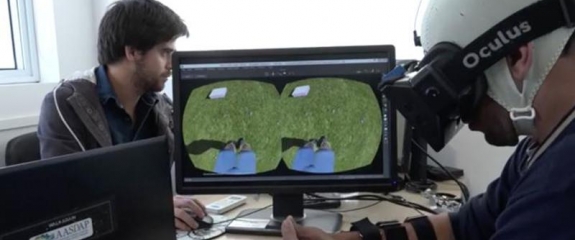Brain-machine Interface Enables Paraplegics to Regain Some Movement, Feeling

Eight paralyzed patients with spinal cord injuries regained some feeling and the ability to voluntarily move leg muscles after training with a brain-machine interface that uses virtual reality. A non-profit international consortium of neuroscientists, engineers and neurorehabilitation experts published their findings after their first year of work with paraplegic patients.
None of the subjects had any movement below the level of their spinal cord injury prior to the study. In addition to regaining some sensation touch and pain, all participants showed signs of recovery of voluntary muscle function and four patients showed improvement in condition that changed their diagnosis from complete to incomplete paralysis. Many participants also saw increased control of bladder function and bowel control. Cardiovascular function also improved, with a significant reduction in hypertension in one patient.
The scientists believe the findings show that brain-interface machines have real potential for people suffering from paralysis from conditions such as spinal cord injury and stroke. The equipmenr uses a cap fitted with 11 EEG recording electrodes placed on the head over areas of the brain that control movement. Patients learned to use brain activity to move an avatar through situations. The simulation was aided by tactile feedback delivered to the patient through a sleeve. The touch-technology, called haptic feedback, uses vibrations that reflect the patients’ stepping movement and helps to enhance the brain-training experience.
These work build on decades of research involving brain-machine interfaces. After several months of training scientists started to observe the signals in patients’ brain activity. After success under virtual reality conditions, patients started training with walking devices with overhead harnesses to support patients and facilitate walking movements. They also operated brain-controlled motorized exoskeleton that was created specifically for this project.


